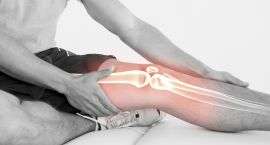Groundbreaking implant technique to heal damaged bone

Patients treated for broken bones and fractures could soon benefit from an innovative implant technique pioneered by Norwegian company Corticalis in collaboration with Spain's Numat Biomedical, the University of Oslo, and the University of the Balearic Islands. The joint Norway / Spain initiative aims to drastically improve the healing and repair of damaged bones, reduce patient risk and suffering, and cut costs.
At present, bone replacement surgery involves transplants from other parts of the body, usually from the hip or shinbone. Other techniques involve using the ground bone from donors or even ground or heat-treated bone from cattle. The complexity of the surgery often increases the risk of complications.
Those most affected by bone graft surgery are the elderly, who are set to represent 25 per cent of Europe's population by 2030. This means that demand for such procedures will grow exponentially and reiterates the need for urgent innovation.
Safer, more efficient, and versatile
Corticalis, in collaboration with its European partners and with support from Eureka's Eurostars programme, thinks it may have the answer to improving bone interventions, whilst simultaneously cutting costs.
It involves the invention of a new material that can be inserted into the affected area as artificial scaffolding to allow the bone to repair itself.
"With our method, it's sufficient to insert a small piece of synthetic osseous matter into the bone. The artificial scaffold is as strong as real bone and yet porous enough for bone tissue and blood vessels to grow round it and replace it," says Corticalis co-founder and CEO, Stale Petter Lyngstadaas. One of the main benefits of the porous ceramic material is that it can easily be cut to shapes that fit the bone defect, making it highly versatile to treat any number of fractures and defects anywhere in the body.
One particular use case scenario has been to treat jaw defects or mandibular cancer. Professor Lyngstadaas says he hopes dentists will be able to use NewBone within two years. "Many millions of kroner are spent annually on implanting new bone tissue in mandibles in Norway. Worldwide, we are talking about several million patients."
The NewBone project contributes to European industrial policy by strengthening the scientific and technological base for research into biologically-based hard-tissue treatment. More specifically, it will greatly impact the quality of life for a significant proportion of European citizens. "Around 90 per cent of the population is expected to experience some type of hard tissue loss and 30 per cent of these are estimated to undergo surgery, " says Professor Havard J. Haugen at the University of Oslo's dentistry faculty. "It is obvious from these statistics that improved treatment alternatives will have profound effects on the quality of life and health of our citizens."
As a means to develop the product, Corticalis stated that working within the framework of a Eurostar project had allowed it great maneuverability. Professor Haugen said it provided flexibility for the lengthy medical trials needed to launch a product such as NewBone. He also underlined the importance of cross-border collaboration to widen the field of expertise and reduce costs. Whilst Corticalis led the consortium, Numat Biomedical provided vital technical and management support and the University of the Balearic Islands conducted complex in vitro experiments at costs that are far cheaper than in Norway. The University of Oslo also worked in tandem with Corticalis, most specifically on a NewBone proof-of-principle in vivo study.


















